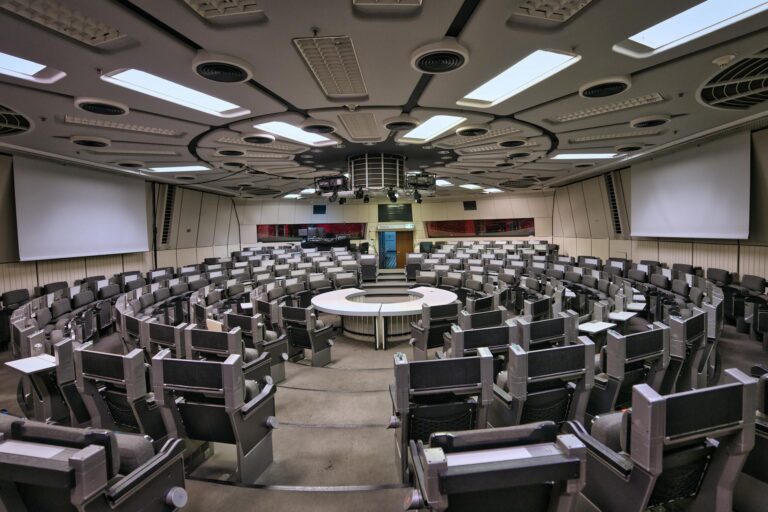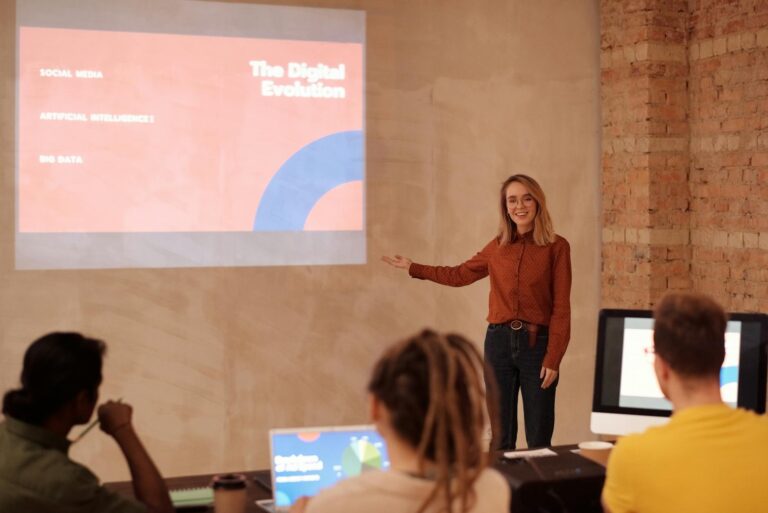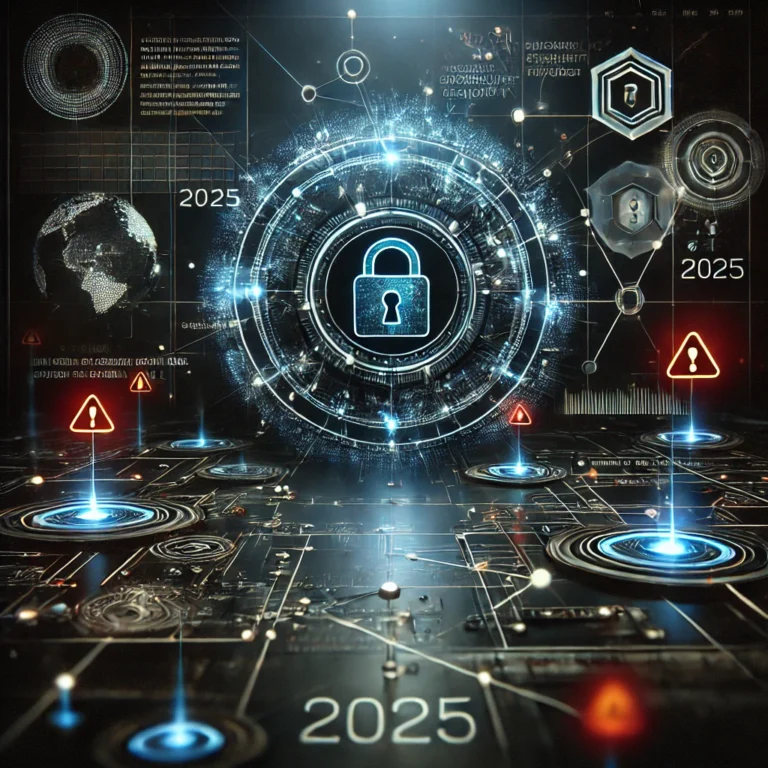2025 Tech Trends Web Mobile Cloud AI UI/UX Business Growth
The 2025 Tech Playbook: Navigating Key Trends in Web, Mobile, Cloud, AI, and UI/UX for Business Growth
Estimated reading time: 19 minutes
Key Takeaways
- The year 2025 signifies a convergence of tech trends across web, mobile, cloud, AI, and UI/UX, necessitating strategic adaptation from businesses.
- Web development is driven by performance-first architectures (like Next.js), AI-powered personalization, and decoupled systems (Headless CMS, micro frontends).
- Mobile app innovation in 2025 emphasizes deeply integrated AI experiences, immersive user interfaces, and the ongoing evolution of cross-platform frameworks like Flutter and React Native.
- Cloud computing and DevOps focus on efficiency, scalability, and sustainability through serverless architecture, comprehensive CI/CD automation, and robust microservices.
- AI and automation are redefining business operations via intelligent delegation, advanced chatbot solutions, accessible no-code/low-code workflow tools, and crucial ethical considerations.
Table of Contents
- The 2025 Tech Playbook: Navigating Key Trends in Web, Mobile, Cloud, AI, and UI/UX for Business Growth
- The Shifting Landscape of Web Development in 2025
- Mobile App Innovation: What to Expect in 2025
- Cloud Computing and DevOps: Powering the Future
- AI and Automation: Transforming Business Operations
- Digital Transformation Strategies for Growth
- The AITechScope Advantage: Your Partner in Digital Evolution
- FAQs About 2025 Tech Trends
- Conclusion: Embracing the Future of Technology in 2025
The 2025 Tech Playbook: Navigating Key Trends in Web, Mobile, Cloud, AI, and UI/UX for Business Growth
The digital world is a relentless current, constantly reshaping the shores of business and innovation. As we step into 2025, the pace of technological evolution isn’t just accelerating—it’s converging, creating a powerful synergy across web development, mobile applications, cloud infrastructure, artificial intelligence, and user experience design. This isn’t merely about incremental improvements; it’s about a fundamental reimagining of how companies operate, interact with customers, and drive growth.
For business owners, developers, and tech enthusiasts alike, understanding these 2025 tech trends is no longer optional; it’s a strategic imperative. From the subtle shifts in coding paradigms to the revolutionary impact of AI on daily workflows, the insights within this comprehensive guide will break down complex advancements into actionable strategies. We’ll explore how today’s cutting-edge technologies can be harnessed to accelerate growth, improve performance, and truly transform the way companies succeed.
In this playbook, we’ll delve into the future of web development trends, unravel the intricacies of mobile app development 2025, dissect the evolution of cloud computing and DevOps, uncover the transformative power of AI automation for businesses, and illuminate the principles of modern UI/UX design. Get ready to discover the technologies that will define the next wave of digital success.
The Shifting Landscape of Web Development in 2025
Web development in 2025 is less about building websites and more about crafting immersive, highly performant, and intelligent digital experiences. The focus has decisively shifted towards speed, scalability, and the seamless integration of advanced functionalities, largely powered by a blend of innovative frameworks and AI.
Performance-First Architectures: Next.js and Beyond
In an era where every millisecond counts, performance optimization techniques are paramount. Users demand instant loading times, and search engines reward fast sites. This has propelled frameworks like Next.js to the forefront, especially for businesses aiming for a fast marketing site Next.js can deliver. For small businesses, Next.js offers an exceptional path to building robust, performant websites without extensive development teams. Its server-side rendering (SSR) and static site generation (SSG) capabilities mean faster initial page loads and better SEO.
A prime example of its impact comes from real-world case studies demonstrating how companies have managed to “Cut Page Load by 60% for a Client” by adopting modern performance fixes, including efficient data fetching and image optimization, often leveraging frameworks like React and Next.js. For a Next.js beginner guide, understanding its core principles of data fetching, routing, and component-based architecture is essential. These principles allow developers to implement “5 Simple React Performance Fixes That Reduce Page Load by Seconds“, making a tangible difference in user experience and conversion rates. The future of web development leans heavily into these performance-centric paradigms, making frameworks that prioritize speed foundational to any modern tech stack for businesses.
The Rise of AI-Powered Web Experiences
AI is no longer an optional add-on; it’s becoming an integral component of web applications. In 2025, we’ll see an explosion of AI-powered web apps that offer hyper-personalization, intelligent content generation, and proactive user assistance. From dynamic content recommendation engines that learn user preferences in real-time to AI-driven analytics that provide deeper insights into user behavior, AI is enriching every facet of the web experience.
Consider how SaaS products can “Make Your SaaS Smarter: 3 Low-Effort AI Features That Delight Users.” This could involve AI-powered search, intelligent form autofill, or even adaptive UI elements that change based on user intent. The integration of AI extends to backend processes too, optimizing database queries, automating content moderation, and enhancing security protocols. The goal is to create web applications that aren’t just interactive, but intuitively responsive and predictive, ultimately driving higher engagement and conversion.
Headless CMS and Decoupled Frontends
The concept of separating the content management layer from the presentation layer has matured significantly. Headless CMS WordPress has emerged as a powerful solution, allowing businesses to leverage WordPress’s familiar content authoring experience while powering dynamic frontends built with modern JavaScript frameworks like Next.js or React. This decoupled architecture provides immense flexibility, enabling content to be delivered to any device or platform (web, mobile, IoT) without being tied to a specific display technology.
For businesses, this means greater agility in evolving their digital presence, improved security, and enhanced performance, as the frontend can be independently optimized. Moving away from monolithic structures towards a more modular approach helps combat “WordPress Without the Bloat: Lightweight Plugins That Actually Help SEO,” ensuring only necessary components are loaded, further boosting site speed and user experience.
Modern UI/UX: Intuitive and Responsive Design
User interface (UI) and user experience (UX) design are evolving from aesthetics to intelligent interaction. In 2025, modern UI/UX design emphasizes hyper-personalization, accessibility, and seamless multi-device experiences. Responsive UI design is now a baseline expectation, but the focus shifts to adaptive design that intelligently adjusts not just to screen size, but also to user context, behavior, and preferences.
The rise of AI allows for truly personalized interfaces, where layouts, content, and even color schemes can adapt to individual users for optimal engagement. Accessibility is also taking center stage, with designers creating truly inclusive experiences. Practical guides like “Designing Accessible Buttons: A Non-Designer’s Guide (Figma Tips)” highlight the granular attention to detail required to ensure digital products are usable by everyone. Voice user interfaces (VUIs) and gesture-based controls are also becoming more prevalent, offering alternative interaction methods that blend seamlessly into daily life.
Micro Frontends: Scalability for Complex Applications
As web applications grow in complexity, managing large, monolithic frontends becomes a significant challenge. Microservices architecture has already transformed backend development, and the principle is now extending to the frontend with micro frontends. This architectural style breaks down a large frontend application into smaller, independent, and loosely coupled components that can be developed, deployed, and managed autonomously by different teams.
While not a panacea, understanding “Micro Frontends: When They Help and When They Hurt (Practical Examples)” is crucial. They are particularly beneficial for large enterprise applications with multiple teams working on different parts of the UI, enabling greater agility, independent scaling, and reduced coordination overhead. This approach is key for organizations looking to build resilient and adaptable web presences in 2025.
Mobile App Innovation: What to Expect in 2025
Mobile applications continue to be the primary digital touchpoint for billions worldwide. In 2025, mobile app development 2025 is characterized by increasingly sophisticated AI integration, immersive user interfaces, and fierce competition among cross-platform development frameworks, all geared towards delivering highly personalized and efficient user experiences.
Flutter vs. React Native: The Framework Showdown
The debate between Flutter vs React Native remains a central point of discussion for mobile developers and businesses alike. Both frameworks offer compelling advantages for building cross-platform applications from a single codebase, significantly reducing development time and cost compared to native development. As we move into 2025, each framework continues to evolve, adding new features and improving performance.
For startups looking for “which mobile framework for startups,” the choice often boils down to existing team expertise, specific performance requirements, and long-term maintenance considerations. React Native, leveraging JavaScript/TypeScript, often appeals to web developers transitioning to mobile. Flutter, with its Dart language and highly expressive UI toolkit, offers pixel-perfect control and excellent performance, ideal for visually rich applications. Reports like “React Native vs Flutter in 2025: Which Is Best for Your Business App?” suggest that both will continue to thrive, with Flutter gaining traction for its performance and native-like feel, while React Native maintains its popularity due to its vast community and ecosystem. Practical guides like “Build a Simple Cross-Platform App with Flutter: From Idea to Play Store” highlight the ease of getting an app to market with these tools.
AI-Driven Mobile Experiences and Personalization
AI is transforming mobile apps from static tools into intelligent companions. AI-driven mobile experiences in 2025 will be deeply personalized, anticipating user needs and proactively offering relevant information or actions. This includes everything from intelligent assistants, personalized content feeds, and adaptive interfaces to AI-powered image recognition and real-time language translation within apps.
The potential for “always on” AI, as seen with discussions around AI smart glasses that can listen and record conversations, points to a future where AI is seamlessly integrated into our daily interactions, including through mobile apps. While privacy concerns are paramount, the underlying technology offers immense potential for enhancing productivity, accessibility, and user engagement through features that truly understand and adapt to the individual.
Immersive UI Trends: Beyond Flat Design
Mobile app UI trends are pushing beyond the minimalist flat design of previous years. In 2025, we’ll see a greater emphasis on immersive, three-dimensional, and even spatial interfaces. Think about richer animations, micro-interactions that provide satisfying feedback, and UI elements that feel more tangible and responsive. The goal is to create interfaces that are not just easy to use but delightful and engaging.
This trend is also influenced by the increasing integration of augmented reality (AR) and virtual reality (VR) capabilities into mobile devices. Apps will leverage these technologies to create more interactive product visualizations, immersive gaming experiences, and practical tools that overlay digital information onto the real world. Crafting such interfaces requires a deep understanding of user psychology and an agile approach to design iteration.
Cloud Computing and DevOps: Powering the Future
The backbone of modern digital infrastructure, cloud computing, and DevOps practices are becoming even more sophisticated and critical in 2025. The emphasis is on efficiency, automation, resilience, and increasingly, sustainability.
Serverless Architecture: Cost Efficiency and Scalability
Serverless architecture is no longer just a niche solution; it’s a mainstream strategy for businesses seeking extreme scalability and cost-efficiency. By abstracting away server management, developers can focus purely on code, while cloud providers automatically handle provisioning, scaling, and maintenance. This model perfectly aligns with the needs of startups looking for a “serverless backend for startups” that can handle unpredictable traffic spikes without hefty upfront infrastructure investments.
A “serverless AWS cost example” often demonstrates how paying only for the compute resources consumed can lead to significant savings compared to traditional always-on servers. This approach also fosters agility, allowing for rapid deployment and iteration of features. As highlighted in guides like “Serverless on AWS: Create a Cost-Efficient Backend That Scales Automatically,” serverless is ideal for event-driven functions, APIs, and microservices, making it a cornerstone of modern, high-performance applications.
DevOps Best Practices and CI/CD Automation
DevOps best practices are now non-negotiable for any organization aiming for rapid, reliable software delivery. The principles of collaboration, automation, and continuous feedback are integral to maintaining a competitive edge. At the heart of DevOps lies CI/CD automation (Continuous Integration/Continuous Deployment). This involves automating the build, test, and deployment processes, significantly reducing manual errors and accelerating time-to-market.
For small teams, implementing “CI/CD for Small Teams: Automated Deployments Without the Headache” is achievable through platforms like GitHub Actions. A “GitHub Actions deploy tutorial” can show how simple it is to set up automated workflows that trigger deployments on code commits, ensuring that changes are delivered quickly and consistently. This level of automation frees developers to focus on innovation rather than infrastructure, making development cycles more efficient and resilient.
Microservices for Resilient and Agile Systems
Building on the principles of modularity, microservices architecture continues its dominance as the preferred approach for complex, scalable applications. By breaking down applications into small, independent services, each running in its own process and communicating via lightweight mechanisms (like APIs), businesses gain immense flexibility.
This architecture enhances resilience (failure in one service doesn’t bring down the whole app), improves scalability (individual services can be scaled independently), and accelerates development cycles (teams can work on services concurrently). It’s a critical component of a modern tech stack for businesses looking to achieve high availability and continuous innovation in a rapidly changing digital landscape.
Strategic Cloud Migration for Legacy Apps
Many established businesses still rely on legacy applications that are critical to their operations but hinder agility and scalability. In 2025, cloud migration strategy is a mature field, offering clear pathways to modernize these systems without “breaking it.” Approaches range from “lift-and-shift” (rehosting) to re-platforming, re-factoring, or even rebuilding applications entirely in the cloud.
The goal is to leverage the cloud’s elasticity, cost-efficiency, and managed services to breathe new life into existing systems, reducing operational overhead and enabling faster innovation. A well-executed cloud migration requires meticulous planning, a phased approach, and robust testing to ensure minimal disruption and maximum benefit.
Sustainable Cloud Computing: The Green Imperative
As AI data centers proliferate and cloud usage skyrockets, the energy consumption of digital infrastructure is a growing concern. In 2025, sustainable cloud computing is becoming a significant focus. Companies like Meta are actively investing in renewable energy sources, such as adding “100MW of solar power from US gear” to power new AI data centers.
This trend reflects a broader corporate responsibility to minimize environmental impact. Businesses are increasingly looking for cloud providers and strategies that offer energy-efficient solutions, optimizing resource utilization, and supporting renewable energy initiatives. Green cloud practices will not only reduce carbon footprints but also lead to long-term cost efficiencies.
AI and Automation: Transforming Business Operations
Artificial Intelligence and automation are at the heart of the digital transformation strategies of 2025. From augmenting human capabilities to completely reinventing workflows, AI is no longer a futuristic concept but a practical tool for driving efficiency, personalization, and strategic decision-making.
AI Automation for Businesses: Intelligent Delegation
The core promise of AI in 2025 is intelligent delegation. AI automation for businesses is about offloading repetitive, data-intensive, or even complex decision-making tasks to AI-powered systems. This frees human talent to focus on creativity, strategy, and high-value interactions. This is precisely where AITechScope excels, specializing in AI-powered automation and intelligent delegation solutions.
Whether it’s automating customer support, personalizing marketing campaigns, or streamlining back-office operations, AI can handle tasks with speed and accuracy often surpassing human capabilities. This leads to reduced operational costs, improved service quality, and increased scalability for businesses of all sizes.
Chatbot Automation: Enhancing Customer Service and Workflows
AI chatbots for customer service have evolved significantly beyond simple FAQs. In 2025, these intelligent agents are capable of understanding complex queries, handling multi-turn conversations, and even resolving issues independently. They are becoming essential for providing 24/7 support, reducing response times, and improving customer satisfaction.
Moreover, chatbot automation extends beyond customer-facing roles. “How Small Businesses Use Chatbots to Save Time: Real Workflows That Work” showcases internal applications, such as automating HR queries, scheduling meetings, or providing instant access to internal knowledge bases. These intelligent assistants become crucial workflow automation tools, streamlining communication and improving employee productivity across various departments.
Workflow Automation Tools: No-Code/Low-Code Solutions
The democratization of automation is a major trend. Workflow automation tools, particularly those with no-code or low-code interfaces, empower business users (not just developers) to create sophisticated automated processes. This includes platforms like n8n, a core offering from AITechScope, which enables businesses to connect disparate systems, automate data flows, and build custom workflows with minimal coding.
The ability to “Automate Repetitive Tasks with No-Code Tools + AI (Save 5–10 Hours/Week)” transforms productivity across organizations. From onboarding new employees to managing marketing campaigns or processing invoices, these tools integrate AI capabilities to make decisions, analyze data, and learn over time, further enhancing efficiency and accuracy. This accelerates enterprise digital adoption by making automation accessible to a wider audience.
AI in Content Creation and Research
AI’s role in content generation and knowledge synthesis is rapidly expanding. Companies like ElevenLabs are at the forefront, now allowing authors to “create and publish audiobooks on its own platform” using AI-generated voices. This capability not only democratizes content creation but also opens up new avenues for accessibility and multilingual content.
Beyond creation, AI is revolutionizing research. Initiatives such as the “Call for proposals: AI tools to transform evidence synthesis” by Cochrane demonstrate how AI can accelerate the daunting task of sifting through vast amounts of information to extract critical insights. This capability significantly speeds up research, allowing for faster decision-making and innovation across various fields.
Ethical AI and Data Privacy Considerations
As AI becomes more pervasive, the ethical implications and data privacy considerations rise to prominence. The development of “always on” AI smart glasses that listen and record every conversation, while technologically impressive, highlights the critical need for robust ethical frameworks, transparent data handling policies, and strong user consent mechanisms.
In 2025, responsible AI development and deployment will be a key differentiator for businesses. Adhering to principles of fairness, accountability, and transparency will be crucial not only for regulatory compliance but also for building and maintaining user trust in an increasingly AI-driven world.
Digital Transformation Strategies for Growth
Digital transformation strategies in 2025 are not just about adopting new technologies; they’re about fundamentally rethinking business models, customer engagement, and operational efficiency through the intelligent application of digital tools.
Enterprise Digital Adoption: Overcoming Challenges
For large organizations, enterprise digital adoption can be a complex undertaking. It requires more than just implementing new software; it necessitates cultural shifts, comprehensive training, and strategic change management. The goal is to move beyond simply digitizing existing processes to truly transforming how the enterprise operates, leveraging automation, data analytics, and AI to create new value. Overcoming resistance to change, integrating legacy systems, and ensuring data security are key challenges that require a well-defined strategy and leadership commitment.
Tech Innovation for Small Businesses: Practical Steps
While large enterprises have significant resources, tech innovation for small businesses is equally critical and often more agile. Digital transformation for small companies doesn’t require massive budgets. As suggested by “Digital Transformation on a Budget: 7 Steps Small Companies Can Start Today,” practical steps include:
- Automating repetitive tasks: Using no-code tools for customer service, marketing, or operations.
- Adopting cloud-based services: For scalability and reduced infrastructure costs.
- Enhancing online presence: With fast, SEO-optimized websites (e.g., “Next.js for Small Businesses: Build a Fast Marketing Site in One Weekend“).
- Leveraging AI for customer engagement: Through smart chatbots or personalized recommendations.
- Implementing robust data analytics: To make informed decisions.
- Fostering a culture of continuous learning: To keep pace with technological changes.
- Prioritizing cybersecurity: Even on a budget.
These steps demonstrate that digital innovation for startups and small businesses is highly achievable and provides a significant competitive advantage.
SaaS Product Optimization: Making AI Smarter
For SaaS providers, SaaS product optimization in 2025 revolves around embedding intelligent features that truly delight users and improve core functionality. As explored in “Make Your SaaS Smarter: 3 Low-Effort AI Features That Delight Users,” even small AI integrations can have a profound impact. This could include:
- Personalized onboarding workflows: AI adapting tutorials based on user roles and goals.
- Predictive analytics for user behavior: Proactively suggesting features or content.
- Intelligent search and filtering: AI understanding context rather than just keywords.
These optimizations not only improve user experience but also drive product adoption, reduce churn, and differentiate offerings in a crowded market.
Performance Optimization Techniques: Real-World Gains
Across all digital platforms, performance is paramount. Performance optimization techniques are critical for user retention, SEO, and overall business success. This involves a multi-faceted approach, encompassing:
- Frontend optimization: Efficient code splitting, lazy loading, image optimization, and caching (as seen in “5 Simple React Performance Fixes That Reduce Page Load by Seconds“).
- Backend optimization: Efficient database queries, serverless functions, and microservices.
- Network optimization: Content Delivery Networks (CDNs) and optimized asset delivery.
- User experience improvements: Perceived performance through skeleton screens and progressive loading.
These techniques, when applied comprehensively, can lead to significant improvements, as demonstrated by case studies showing “How We Cut Page Load by 60% for a Client,” directly impacting conversion rates and bounce rates.
Crafting a Modern Tech Stack for 2025
The choice of a tech stack for modern businesses in 2025 is strategic. It balances innovation with practicality, scalability with cost-efficiency. A typical modern stack might include:
- Frontend: Next.js, React, or Vue for highly interactive and performant web apps.
- Mobile: Flutter or React Native for cross-platform efficiency.
- Backend: Node.js, Python, or Go, often deployed as microservices.
- Database: Cloud-native options like AWS DynamoDB, MongoDB Atlas, or PostgreSQL.
- Cloud Infrastructure: AWS, Azure, or Google Cloud, leveraging serverless computing.
- DevOps: GitHub Actions, GitLab CI/CD, Jenkins for automation.
- AI/ML: Integrated services from cloud providers or specialized AI platforms for specific tasks.
- CMS: Headless CMS (e.g., Strapi, Contentful, or headless WordPress).
This modular approach allows businesses to select the best tools for each specific need, building a resilient, scalable, and adaptable digital ecosystem.
The AITechScope Advantage: Your Partner in Digital Evolution
Navigating the complex and rapidly evolving landscape of 2025 tech trends requires a strategic partner with deep expertise. AITechScope stands as a leading provider of virtual assistant services, specializing in helping businesses leverage these cutting-edge technologies.
Our focus on AI-powered automation, n8n workflow development, and business process optimization directly addresses the core challenges and opportunities of the digital age. We empower companies to scale operations efficiently, significantly reduce costs, and dramatically improve overall efficiency through intelligent delegation and bespoke automation solutions. Whether you’re a small business aiming for your first automated workflow or an enterprise seeking to optimize complex processes, AITechScope provides the insights and tools to transform your operations and secure your competitive edge in the digital world of 2025 and beyond.
FAQs About 2025 Tech Trends
Q1: What are the most significant web development trends for 2025?
A: The most significant web development trends for 2025 include performance-first architectures (like Next.js), pervasive AI integration for personalized experiences, the widespread adoption of headless CMS, and an increased focus on intuitive, responsive, and accessible UI/UX design. Micro frontends are also gaining traction for large-scale applications.
Q2: Is Flutter or React Native better for mobile app development in 2025?
A: Both Flutter and React Native remain strong contenders for mobile app development in 2025. Flutter is often praised for its performance, native-like UI, and rapid development capabilities, while React Native benefits from a large JavaScript developer community and extensive ecosystem. The “best” choice often depends on your team’s existing skill set, specific app requirements, and long-term maintenance strategy.
Q3: How can small businesses leverage AI automation effectively without a huge budget?
A: Small businesses can effectively leverage AI automation for businesses by focusing on automating repetitive tasks using no-code/low-code tools (like those for workflow automation), implementing AI-powered chatbots for customer service, and utilizing AI features embedded in existing SaaS products. Prioritizing high-impact, low-effort AI integrations can yield significant returns without a massive investment.
Q4: What are the key benefits of serverless architecture for startups?
A: For startups, serverless architecture offers immense benefits, including significant cost savings (paying only for compute time), automatic scalability to handle fluctuating demand, reduced operational overhead (no server management), and faster time-to-market. It allows startups to focus on product innovation rather than infrastructure.
Q5: How important is CI/CD automation for small development teams?
A: CI/CD automation is extremely important for small development teams. It enables faster, more reliable software deployments by automating build, test, and release processes. This reduces manual errors, frees up developers’ time, and ensures that even small teams can maintain a rapid pace of innovation and delivery, crucial for remaining competitive.
Q6: What does “digital transformation on a budget” mean for small companies?
A: “Digital transformation on a budget” for small companies means strategically adopting technologies that provide high impact with relatively low cost. This includes automating tasks with no-code tools, migrating to cost-efficient cloud services, building performant and SEO-optimized websites (e.g., with Next.js), and using affordable AI tools to enhance customer engagement and internal efficiency.
Q7: How is AI impacting content creation and publishing?
A: AI is significantly impacting content creation and publishing by enabling tasks like generating realistic voiceovers for audiobooks (as seen with ElevenLabs), assisting with content outlines, providing translation services, and even aiding in the synthesis of research data. This democratizes content creation, improves accessibility, and speeds up the production process across various media.
Conclusion: Embracing the Future of Technology in 2025
The technological landscape of 2025 is a dynamic fusion of innovation, demanding adaptability and strategic foresight from businesses across all sectors. From the lightning-fast experiences delivered by Next.js and React performance to the intelligent efficiencies unlocked by AI automation for businesses, and the seamless interactions crafted through modern UI/UX design, the opportunities for growth and transformation are unprecedented.
The convergence of web development trends, mobile app development 2025, cloud computing and DevOps best practices, and the pervasive influence of AI is not just changing how we build digital products; it’s redefining how businesses operate, innovate, and connect with their audience. Whether it’s a small business aiming to build a fast marketing site Next.js, a startup deciding between Flutter vs React Native, or an enterprise looking to implement robust digital transformation strategies, the call to action is clear: embrace these trends.
Companies that strategically integrate these 2025 tech trends will not only gain a competitive edge but also foster environments of greater efficiency, resilience, and customer satisfaction. AITechScope stands ready to be your guide and partner in this journey, transforming complex technological challenges into actionable solutions that propel your business forward through intelligent delegation and cutting-edge automation. The future is here, and it’s time to build it, together.






